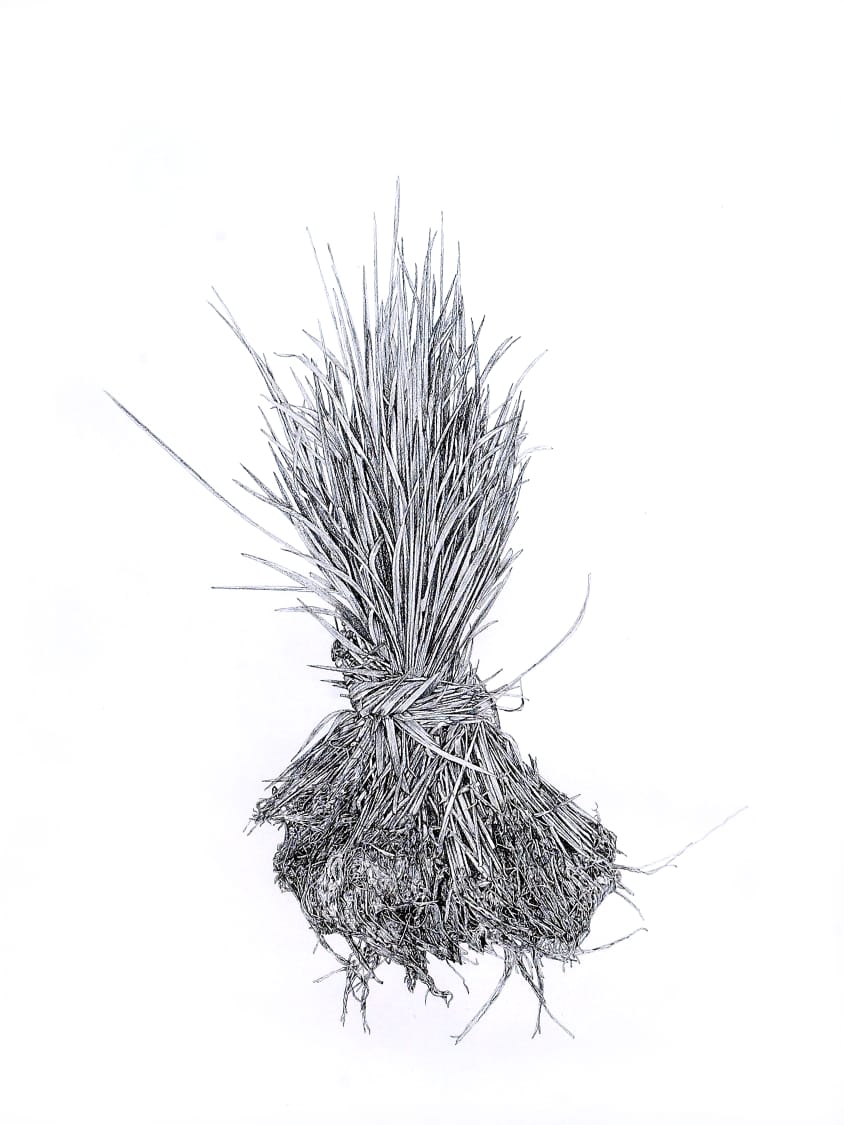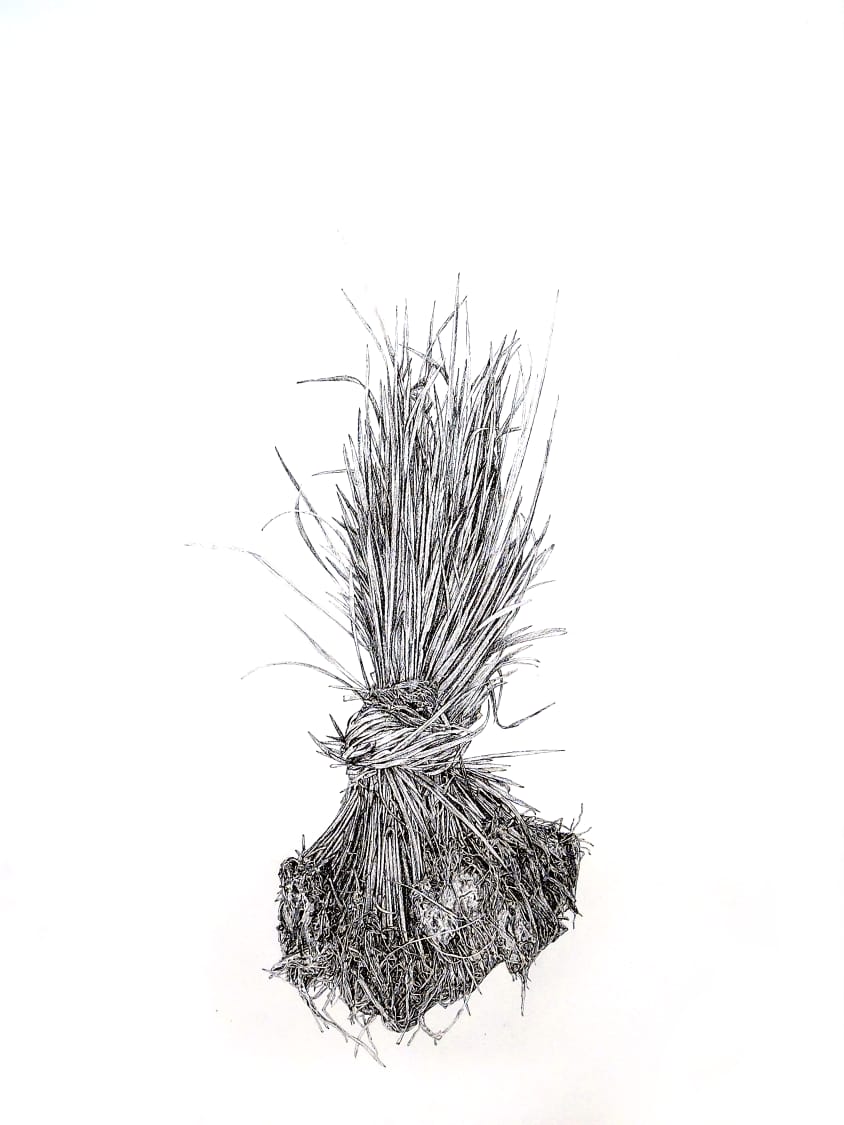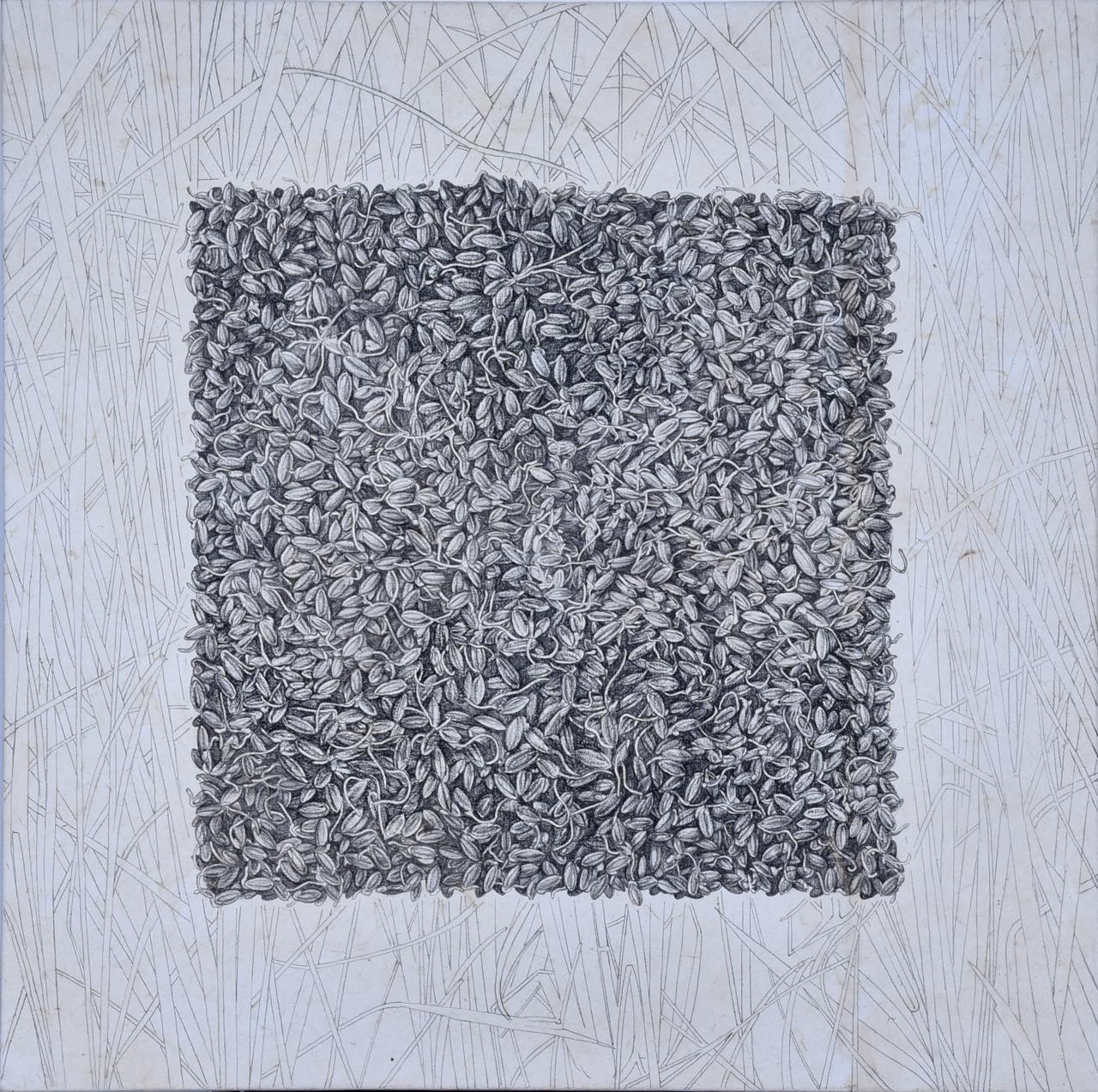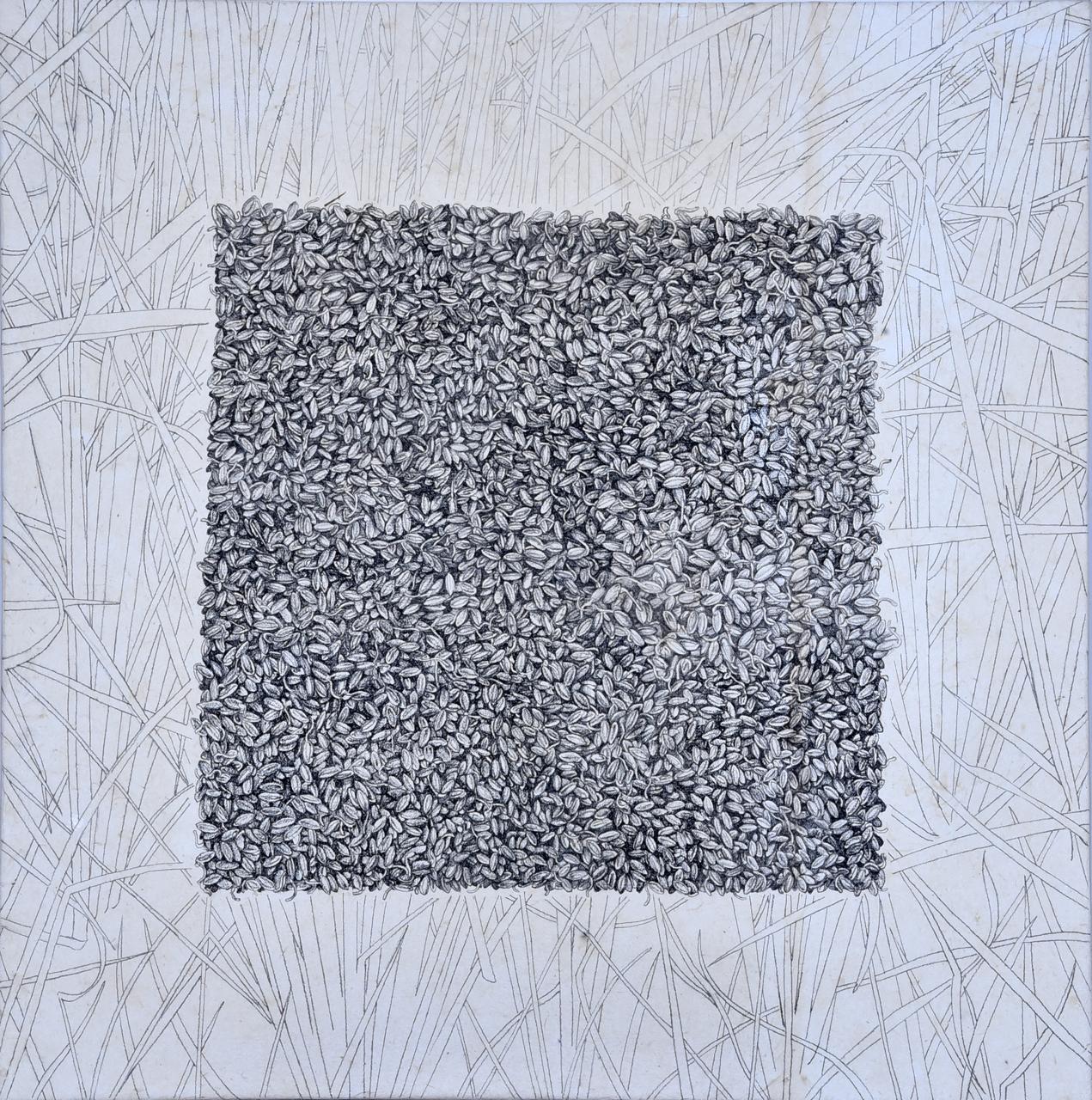Akhil Mohan
Akhil Mohan lives in a rural area of s o u t h e r n Kerala, India, a m o n g people whose main livelihood is agriculture. His family also has an ancestral relationship with farming. According to the census, Kerala is known for its high literacy rate in India and holds high ranks in education, art, and culture. Unfortunately, industrialisation has sidelined agricultural functions for at least three decades. The region now imports rice and vegetables from outside the state. Consequently, the new generation has lost interest in farming and such initiatives. If anyone continues in agriculture within the new age group, it is often just for entertainment. As a member of a farmer’s family, Akhil feels it is his duty to maintain agriculture as a basic necessity. He graduated in painting due to his academic interest and follows the discourse of t h e art world. At some point, he realised that investing time and energy in art brought him no benefit and could not sustain him as an artist in an underdeveloped region. Thus, he returned to farming as his main career while practising art as an eternal urge. Akhil now poses an indispensable question: Why shouldn’t art and agriculture go hand in hand? His experience of being in the binary positioning, as both an artist-farmer a n d farmer-artist authorises him to combine both practices by content and form. Contemporary art allows for crossing the borders maintained by modernist approaches that view art as expressionistic yet abstract at the same time. Akhil aims to communicate his art in a language familiar to the people around him. Keeping this in mind, he has portrayed different phases of paddy cultivation, from the preparatory phase to the post-production processes, illustrating how paddy is planted, how it grows, and the various stages of harvest. His work is not just visual documentation but has the potential to archive agricultural knowledge to a profound greatness of wisdom. Akhil chose minimal, mostly earthy colours, after a deep exercise in observing nature accurately. His art is non-figurative but highly objective and detailed. In short, he substantiates the long traditions of agriculture and its lost legacies in his current series of works. Although Akhil’s works of art primarily carries the narratives and imageries about his region and experience, it has its innate potential to resonate with the vulnerability of our living world where agriculture, as a primordial activity, is o n the verge of vanishing.

Collection
6, Ground Floor, Main Road Hauz Khas Village, New Delhi, 110016
- +91-9811406262
- info@creativityartgallery.org




